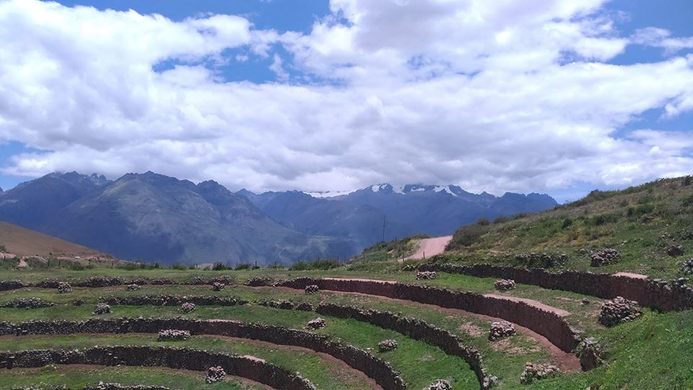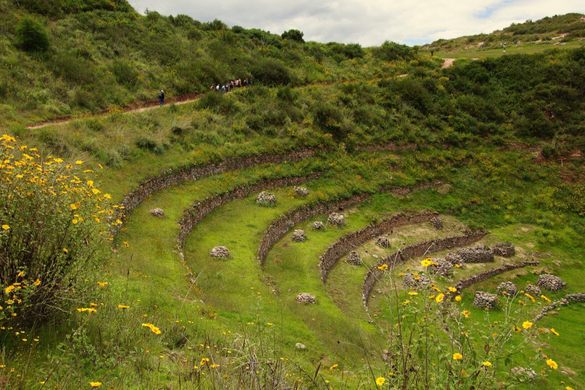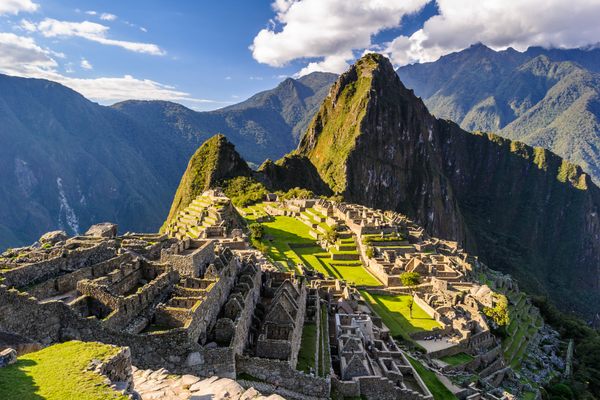Moray
Huge stone depressions which may have acted as an Incan agricultural experiment.
Grouped together in Peru’s lush Cuzco region, the ringed Incan ruins known as Moray have long been a mystery, but it is looking more and more likely that the nested stone rings may have been part of a large-scale agricultural experiment.
Unlike a number of the elaborate metropolises and statuary left behind by the Incan people, the rings at Moray are relatively simple but may have actually been an ingenious series of test beds. Descending in grass-covered, terraced rings, these rings of rings vary in size, with the largest ending in a depth of 30 meters (98 feet) deep and 220 meters (722 feet) wide.
Studies have shown that many of the terraces contain soil that must have been imported from other parts of the region. The temperature at the top of the pits varies from that at the bottom by as much as 15ºC, creating a series of micro-climates that — not coincidentally — match many of the varied conditions across the Incan empire, leading to the conclusion that the rings were used as a test bed to see what crops could grow where.
This proto–America’s Test Kitchen is yet another example of the Incan ingenuity that makes them one of the most remarkable declined societies in the planet’s history.
Know Before You Go
5 kilometers west of the pueblo of Maras. The easiest way to access the site is either via taxi or by tour group. It is also possible to take a local bus to the site from Urubamba.










































Follow us on Twitter to get the latest on the world's hidden wonders.
Like us on Facebook to get the latest on the world's hidden wonders.
Follow us on Twitter Like us on Facebook